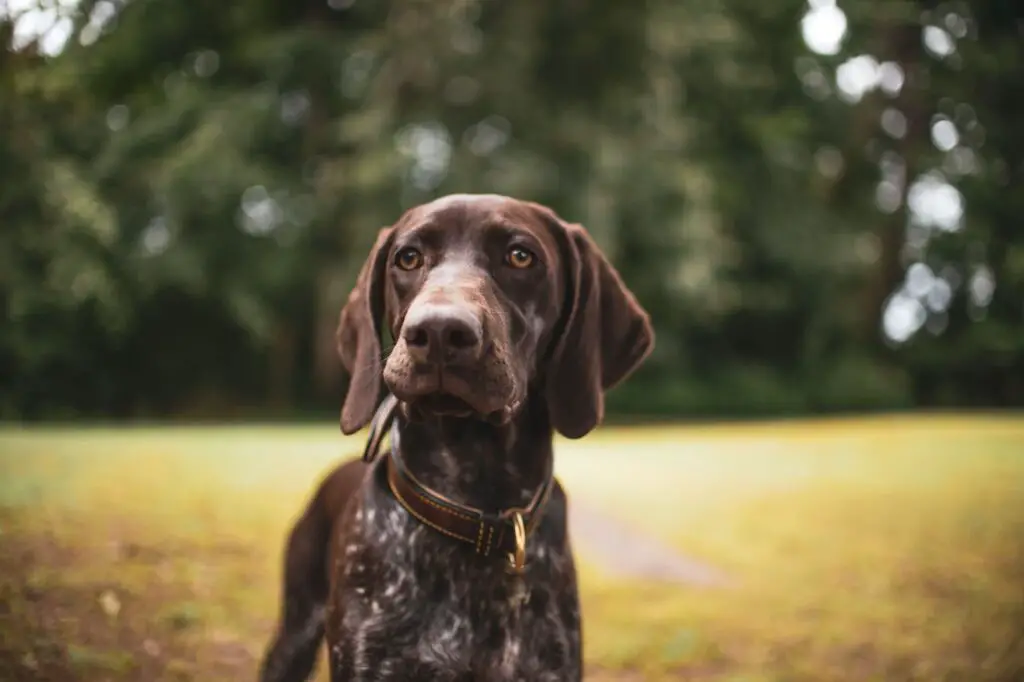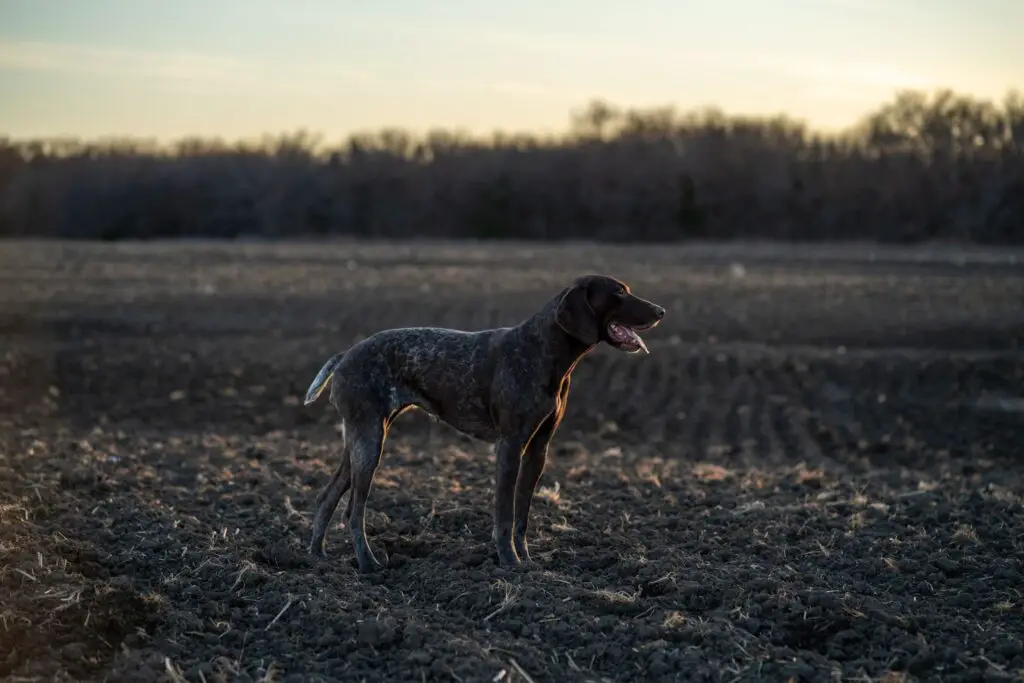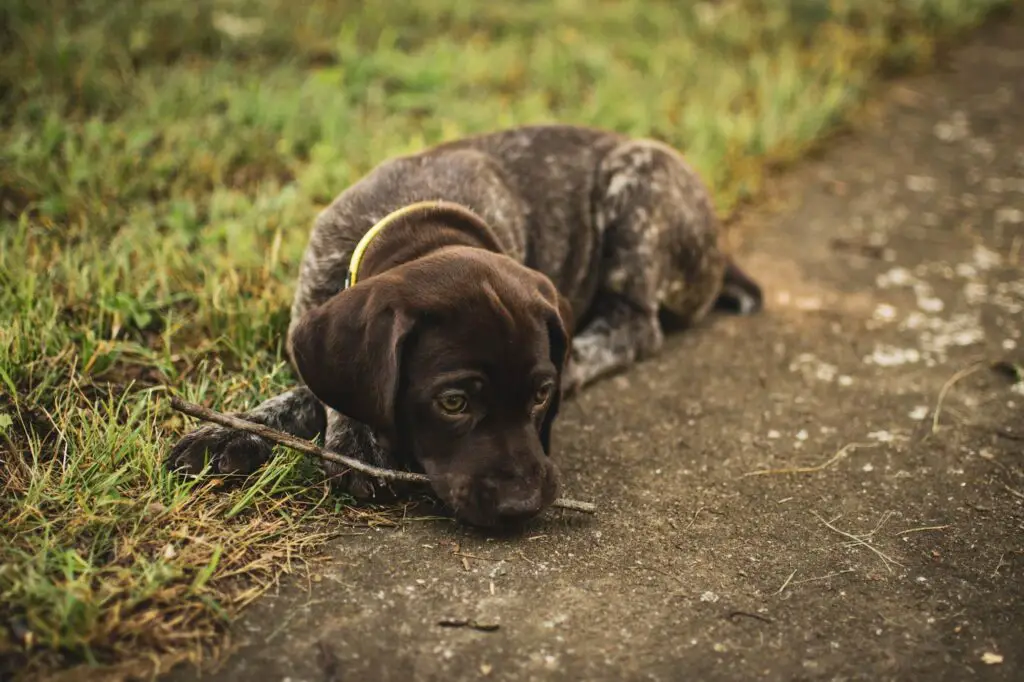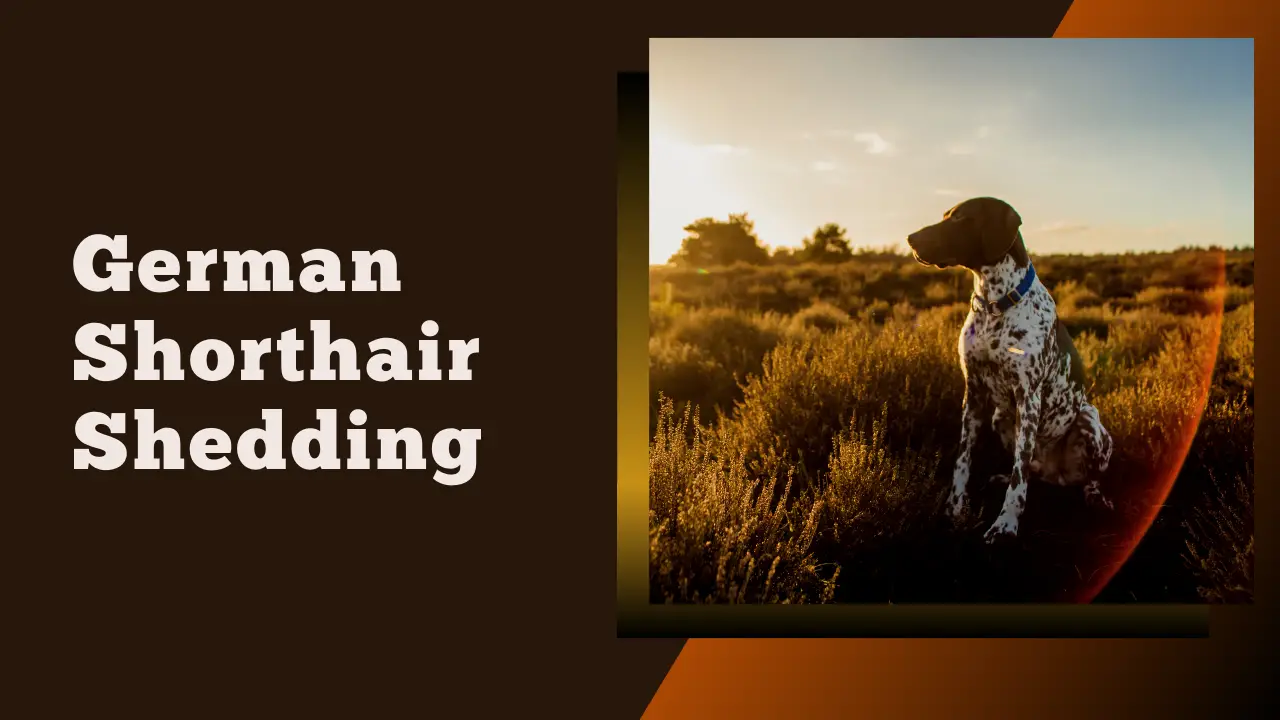All dogs shed, and that’s a fact. However, some dogs shed less, while others shed more.
For instance, some German Shorthaired Pointers shed moderately, while others shed heavily. These dogs have dense, short coats that shed seasonally and continuously all year round.
Regular brushing can help control shedding and keep your home clean.
Below, we will discuss the shedding of German Shorthaired Pointers in detail and list care and grooming tips, so let’s jump right in.
Do German Shorthaired Pointers Have Hair or Fur?
German Shorthaired Pointers have fur, not hair. Their fur is short, dense, and water-repellent, which helps them stay warm and dry while hunting or swimming.
Unlike humans, who have one type of hair all over their bodies, dogs have different types of fur on different parts of their bodies. The fur on a GSP’s ears, tail, and belly is usually softer and shorter than on its back and sides.

This variation in fur texture helps protect the dog from the elements and serves different purposes depending on its lifestyle and breed.
Do They Have a Double Coat?
Some people may describe the coat of a German Shorthaired Pointer as being “double” because it’s thick. However, they don’t have a double coat.
They have a dense, short, and waterproof coat. Some dogs may have slightly thicker or longer fur, but it’s not a double coat in the traditional sense.
Do Pointers Shed a Lot?
Some German Shorthaired Pointers shed moderately. Others shed heavily, depending on the individual dog and the season.
Note that all dogs shed to some extent, but the amount of shedding can vary between breeds and individual dogs.
However, regular brushing and grooming can help reduce the amount of shedding and keep your GSP’s coat healthy and shiny.
Are GSPs Low Shedding?
German Shorthaired Pointers have a dense, short coat. Still, they don’t shed as heavily as some other breeds, so they’re not considered a low-shedding breed.
However, they may still produce a noticeable amount of hair in your home.
Things That Cause Excessive Shedding in a GSP
Although these dogs don’t shed a lot, there’s a list of things that can cause excessive shedding in any dog breed, such as the following:
Seasonal Changes
Many dogs shed more during the spring and fall as their coats adjust to the changing weather.
Stress
Stress can cause a dog to shed more than usual, so keep your German Shorthaired Pointer calm and relaxed.
Hormonal Imbalances
Thyroid problems, or other hormonal imbalances, can cause excessive shedding.
Allergies
Allergies to food, fleas, or environmental allergens can cause excessive shedding in dogs.
Skin Infections
Skin infections or other skin conditions can cause excessive shedding, redness, itching, and disease.
Poor Nutrition
A lack of essential nutrients in a dog’s diet can cause a poor coat and increased shedding.
Aging
As dogs grow older, they may shed more, so it’s important to watch their coat and skin closely.

If you notice excessive shedding in your GSP, it’s important to take them to the vet for a check-up. Underlying health conditions may be the cause, and prompt treatment is important for their health and well-being.
How To Reduce Shedding in a GSP?
Luckily, you can prevent excessive shedding in your German Shorthaired Pointer. Here’s a list of tips:
Brush Your GSP Regularly
Regular brushing can help remove loose hair and reduce shedding. Use a slicker brush or a de-shedding tool to remove dead hair from your dog’s coat.
Feed It a Balanced Diet
A balanced diet with the right amount of vitamins, minerals, and nutrients can help improve skin and coat health, reducing shedding.
Bathe and Groom Your German Shorthaired Pointer As Needed
Regular bathing and grooming can help keep their coat healthy, soft, and shiny. Make sure to use a gentle dog shampoo to avoid irritating your dog’s skin.
Keep It Hydrated
Dehydration can cause shedding, so make sure your dog is drinking enough water.
Address Any Underlying Health Problems
If your dog is shedding excessively, it may indicate an underlying health problem, such as skin allergies or infections. Consult with your veterinarian to determine the cause and get proper treatment.
Use Air Purifiers
Air purifiers can help remove pet hair and dander from the air, reducing the amount of shedding in your home.
What Type of Brush Should I Use for Brusing My GSP?
You can use a slicker or firm bristle brush to brush a German Shorthaired Pointer.
A slicker brush removes loose hair and dirt, while a bristle brush can help distribute natural oils throughout the coat. You can also use a comb to remove any tangles or mats.
Regular brushing can help keep your German Shorthaired Pointer’s coat healthy and prevent matting. It’s also a good way to bond with your pet and check for skin irritations or parasites.
Do They Need Professional Grooming?
Whether you groom your German Shorthaired Pointer yourself or visit a professional depends on a few factors, including your experience and skill level in grooming, your dog’s behavior and comfort level during grooming, and your availability and schedule.
If you’re comfortable and have experience in grooming dogs, you can save money and have more control over the grooming process by doing it yourself at home.
However, if you’re inexperienced at grooming, your dog is difficult to groom, or you have a busy schedule, taking it to a professional groomer may be a better option.
Professional groomers have the training, tools, and experience to safely and effectively groom dogs and can help ensure the proper maintenance of their coats, skin, etc.

Are They Hypoallergenic?
German Shorthaired Pointers aren’t hypoallergenic. They have a dense, short coat that sheds regularly, which can cause a reaction in people with pet allergies.
Do German Shorthaired Pointers Smell?
German Shorthaired Pointers can have a dog odor if they’re not properly groomed or have skin infections or other health issues.
Therefore, regular grooming and good hygiene can help minimize any odor. However, if you’re smell-sensitive, consider other dog breeds.
Final Tips
We will wrap this article with helpful bathing, drying, and grooming tips for new dog owners, so take notes.
Bathing:
- Brush your GSP to remove any loose hair and tangles.
- Wet it completely with lukewarm water, avoiding the face and ears.
- Apply a gentle dog shampoo, lathering well and avoiding the eyes and nose.
- Rinse thoroughly with lukewarm water to protect your dog’s sensitive skin.
Note: Always use a gentle dog shampoo and avoid getting soap or water in your GSP’s face and ears. Lastly, check for any signs of skin irritation or infection after bathing.
Drying:
- Use a large, absorbent towel to remove excess water and keep your dog warm.
- Use a blow dryer on a low heat setting, starting at the back and working toward the head.
- Be sure to hold the blow dryer at least 6 inches away from the skin to avoid burns.
- Brush your GSP to remove any tangles as you go and ensure a shiny coat.
Grooming:
- Brush your GSP regularly to keep the coat shiny and healthy, removing loose dog hair and tangles. Trim any excess hair or feathers around the ears, paws, and hocks as needed.
- Check and clean the ears regularly to prevent infections.
- Trim the nails as needed.


